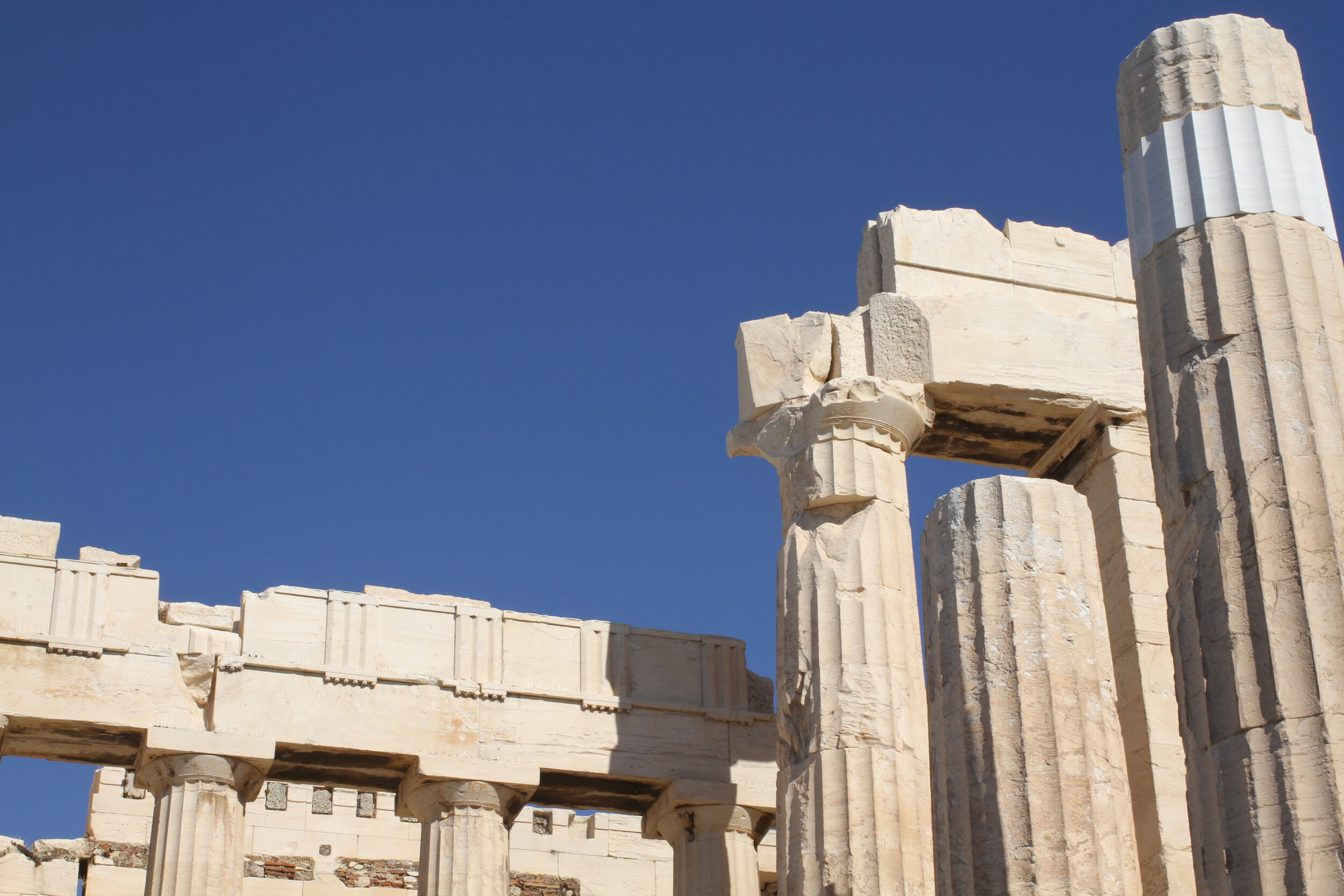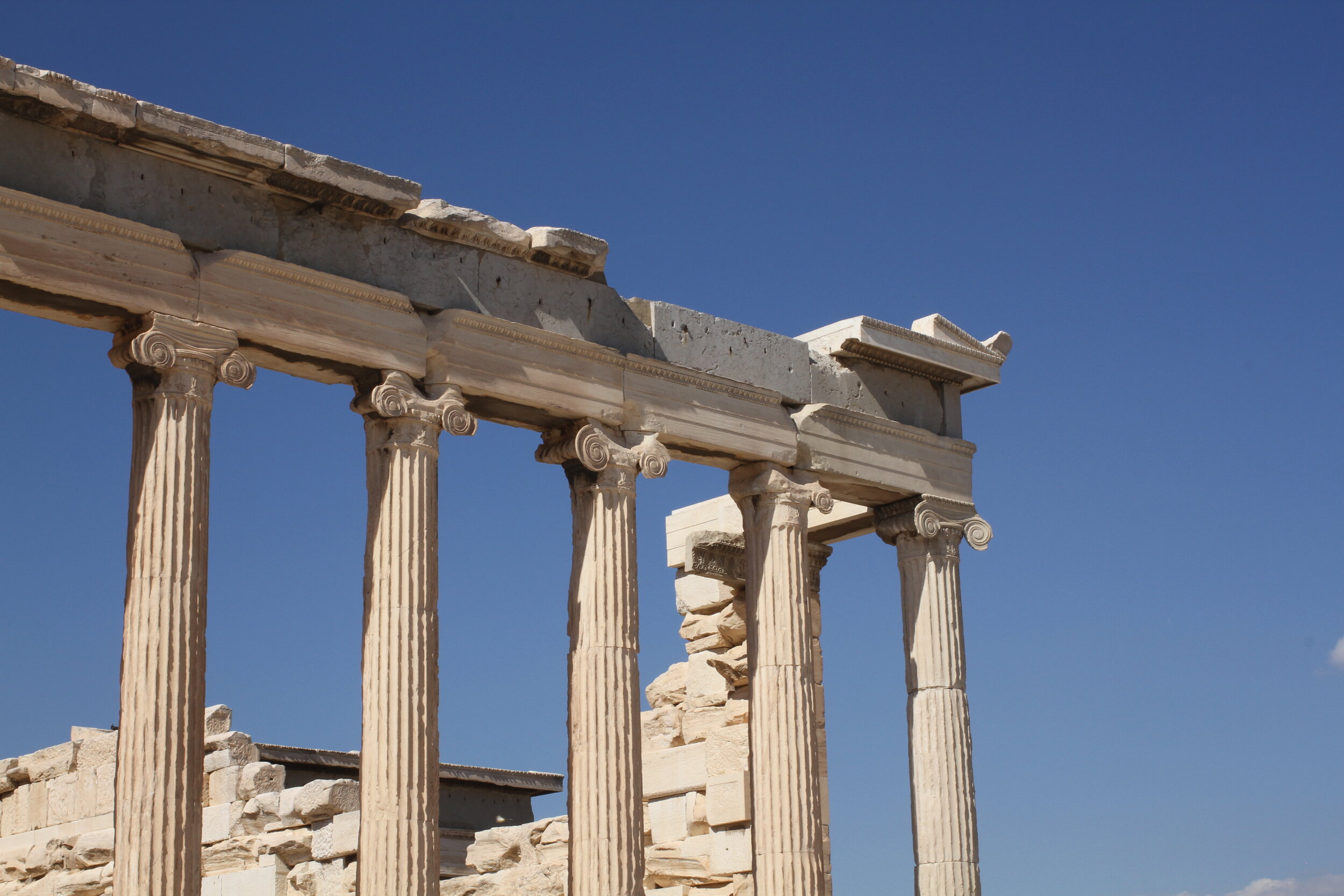Acropolis Views
Words & Photographs by Liz Schaffer, Illustration by Nell Hugh-Jones
And extract from the Greece magazine.
Found amidst the antique stores and street art of Psyrri, The Foundry is an abode for lovers of history and design. Made up of 12 unique suites, this is a new breed of hotel; a homely sanctuary in the heart of Athens that tips it debonaire hat to the past. The building was once a font foundry - among Europe’s finest according to hotel manager Marios Koullouros - and the decor pays homage to this. Against a backdrop of vibrant wallpaper, mid-century-inspired furniture, vintage prints and greenery aplenty (the vertical garden is the first thing you notice), are immense Crittall windows, polished concrete floors and patches of exposed brick.
What makes The Foundry astounding though is its roof terrace, where swooning is unavoidable. Head here as the sun descends and toast the brilliance of the moment as you watch the Acropolis blaze beneath the last of the light, the modern city cascading out around it. The scene before you is so glorious - a resplendent, chaotic marriage of old and new - that you wonder how it can be real. The terrace is just as magical in the morning when you sit amidst grape vines and pomegranates, slabs of marble beneath your feet, and watch the city awaken, treats from your breakfast basket spread before you.
Having gazed adoringly at the Acropolis for hours during my stay, a formal introduction felt necessary, so I booked a private tour with Greeking.me, who offer an array of authentic guided Greek experiences. I met my Xenia, my guide, near the Acropolis Museum, which was built to house the site’s treasures and boasts a top floor made of glass and angled to mirror the position and proportions of the Parthenon - a conversation between the modern and ancient worlds.
A font of all knowledge, Xenia explained that the Parthenon - undoubtedly the most iconic Acropolis structure - was built in the 5th century BC to thank the gods for victory in the Peloponnesian War and show the world that Greece had not only survived but flourished. As we climbed the hill towards it, Xenia noted that Greek construction was smaller scale, kept close to us mere mortals who were seen as the centre of everything. Yet walking through the Acropolis’ marble entrance, Temple of Athena Nike glowing beside me, the experience was utterly overwhelming. I felt the weight of history and all that this site represents. Standing before the Parthenon, I wasn’t the only visitor who needed a moment. I wonder if the Acropolis has always inspired such awe. This site was built to honour the divine, as a reminder that the gods were with us, helping us find order in chaos, but it was also a political message, a statement about the might and skill of the Athenians of the Golden Age - who would have been formidable.















